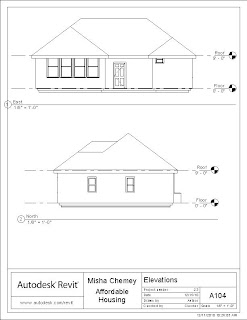1. How do you achieve a balance between cost-saving measures, important features, and environmental responsibility when designing a residential structure?
You use local materials with the best combination of cost and efficiency, and you strive for simplicity.
2. What are the advantages and disadvantages of using 3D architectural software rather than creating hand-produced plans?
You can physically see every detail from any angle in the software, but making a single change can be painstaking and can throw off several other features.
3. Why are organizations such as LEED important?
They provide design specifications to make a home efficient and for it to have a low environmental impact.
4. When planning a project, how does the availability of public utilities impact the design?
You must consider any factors which could have an impact on the materials put into construction, including facilities such as sewers and electricity.
5. What options are available for the management of wastewater from a building?
You can have a personal home septic system or you can get water from the public sewage system where available.
6. What are the important considerations when design a plumbing system?
Pipe size, slope, materials, and paths, as well as water heating and pipe insulation.
7. Why should a designer know about the different types of lighting and their applications?
Designers should know how to best and most efficiently light a space, wherever it may be.
8. What are the important considerations when designing an electrical system?
One must consider efficiency, simplicity, and compatibility for expansion and maintenance.
9. What information is important when documenting the design of a building?
You must include materials, dimensions, and external views.




